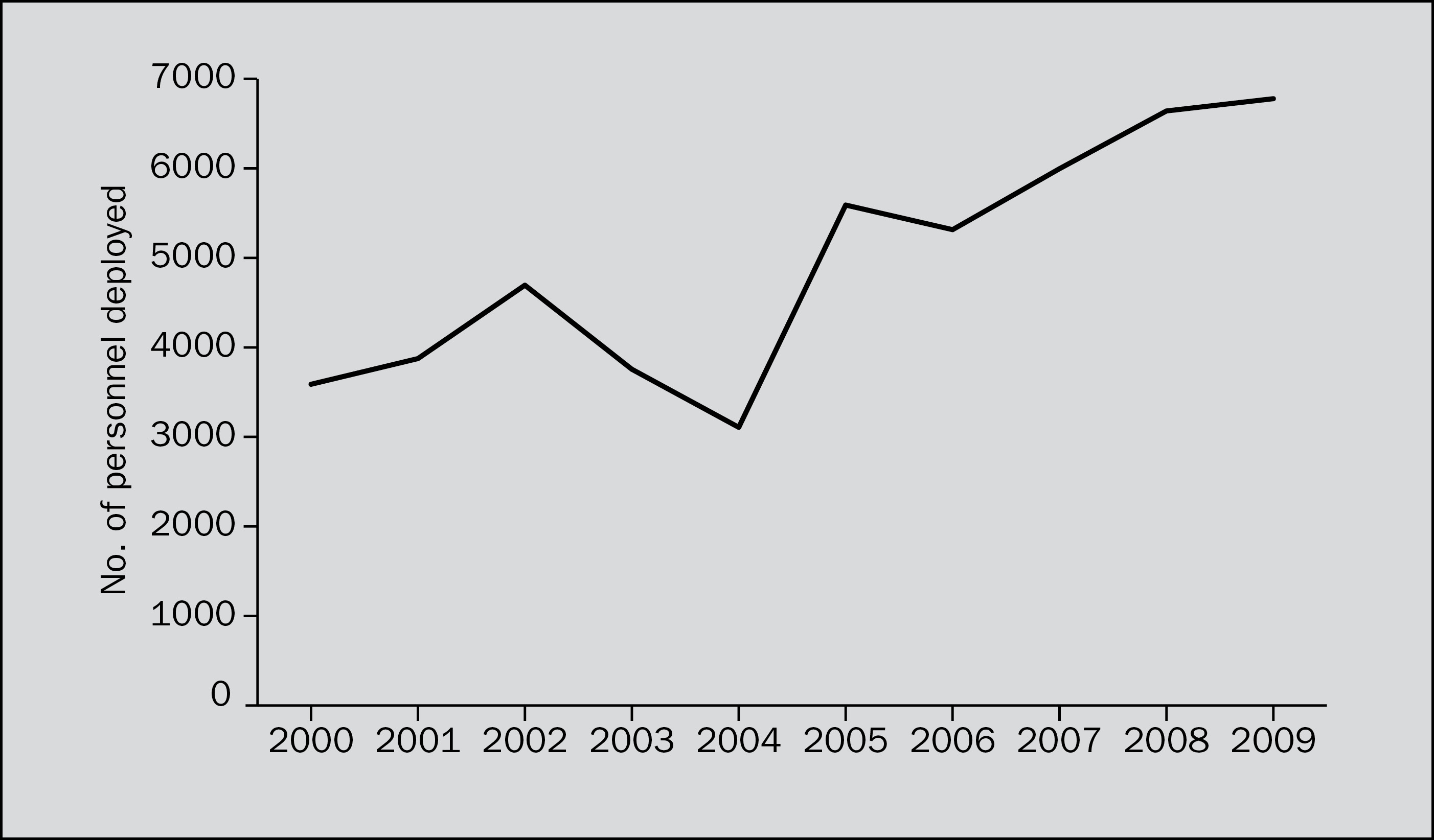3. Civilian roles in peace operations
I. Introduction
II. Addressing the civilian capacity gap in peace operations
III. The UN Mission in Sudan
IV. Conclusions
Figure 3.1. Number of civilians deployed to United Nations peace operations, 2000–2009
Summary
Civilian personnel play an ever more central role in multidimensional and integrated peacekeeping and peacebuilding operations, which often integrate political, humanitarian, development and military activities to assist the host country’s transition from conflict to sustainable peace. As mission mandates have grown increasingly complex, the requirement for qualified civilian expertise has grown apace. The number of civilian tasks mandated in United Nations Security Council resolutions for UN peace operations and the number of civilian missions undertaken by regional organizations have increased dramatically in the past five years. These increases are coupled with a near doubling of the number of civilians assigned to global multilateral peace operations: they currently exceed 6500.
On the 10th anniversary of the seminal Brahimi report, which highlighted for the first time the centrality of the civilian contribution to the effectiveness of UN peace operations and called for a strengthened UN capacity in this area, 2009 was marked by sustained attention to the civilian dimension. Although that dimension has been strengthened by a range of recent institutional innovations (both at the multilateral and national level) to overcome the deployment challenges that have plagued past missions, these nascent structures are still neither appropriately configured nor provided with adequate resources. More critically, there is a lack of a common understanding of the civilian role—who are the civilian experts and what is their role? In addition, these institutional fixes may not translate into concrete or workable solutions in the field. The UN Mission in Sudan (UNMIS) illustrates the operational challenges in filling and sustaining the civilian component of peace operations and how the lack of conceptual clarity can affect the mission’s overall efficacy.
Enhancing the civilian dimension is thus a broader agenda and goes beyond expeditiously deploying the right experts in the numbers necessary. It requires revisiting the broader architecture and examining the linkages between interrelated factors, such as financing peace operations and recruitment. It also necessitates critical analysis of the purpose and objectives of each civilian function in order to avoid duplication of tasks within the mission.
Civilians deployed to peace operations, 2000–2009

Sharon Wiharta (Indonesia) is a Senior Researcher with the SIPRI Armed Conflict and Conflict Management Programme, where she leads research on peacekeeping and peacebuilding issues.
Dr Stephanie Blair (Canada) is an Associated Senior Research Fellow at SIPRI and co-director of the SIPRI Project on the Civilian Contribution to Peace Operations.